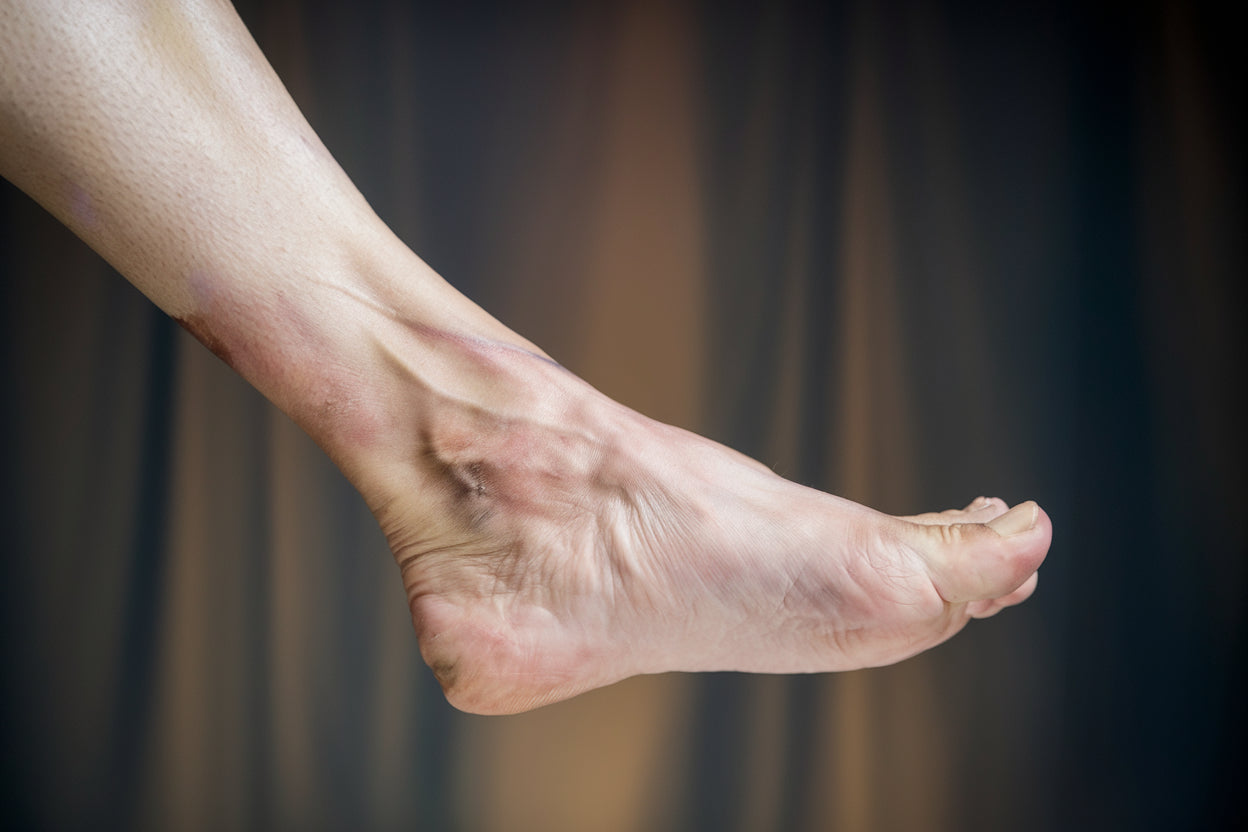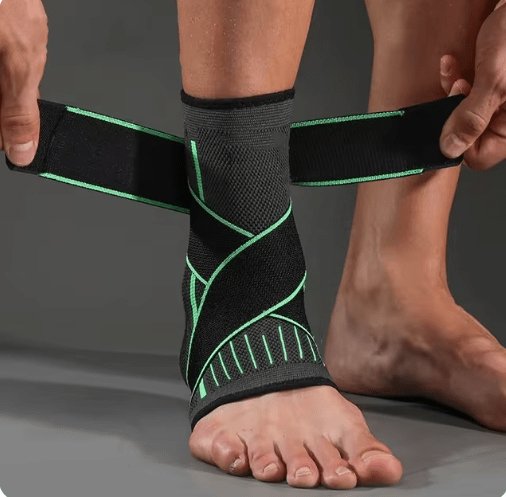Sprained Ankle: Symptoms, Treatment, and Rehabilitation

A sprained foot (or sprained leg) is one of the most common ankle injuries that can affect both children and adults. Spraining the foot often occurs when the foot bends sideways, for example inward, which causes damage to the ligament or ligaments around the ankle. In many cases, this means that the outside of the ankle is stretched, and sometimes the ball of the foot can also be damaged if the load is high enough. This article reviews the most common symptoms, treatment methods and rehabilitation exercises for a sprained foot.
What is a sprained foot?
A sprain is an injury that occurs immediately after an injury if the foot is put under stress in the wrong movement. Mild sprains are usually harmless, but a more serious sprain can also hide a fracture. However, most injuries of this type heal well if the foot is cared for properly. Emergency care is important to quickly reduce swelling and facilitate the healing process. For a more in-depth understanding of related injuries, you can read about muscle tears in the shoulder .
Symptoms of a sprained foot
Common symptoms include:
- Swelling around the ankle
- Pain that sometimes hurts with every step
- Bruising and tenderness around the injured part of the foot
- Unstable feeling in the ankle
- Problems standing on one's feet
- In some cases, an underlying fracture may be present
For more information about related injuries, you can read about foot bone fractures .
Treatment of sprained foot
Immediate treatment is important to preserve the normal shape of the foot and minimize subsequent damage. A common method is RICE:
- Rest: Try not to put more strain on your foot than necessary. You try to refrain from heavy physical activity immediately after the injury.
- Ice: Apply ice to the area to reduce swelling, but be careful not to apply too much pressure.
- Compression: Use an elastic bandage to wrap your foot. Remember to loosen if it starts to feel too tight.
- Elevation: Place the leg slightly above heart level to help blood circulation and reduce swelling.
This method can go a long way for a minor sprain, but if you suspect a fracture or if your foot is very swollen and hurts when you try to stand, you should seek medical attention. For more detailed treatment, visit treatment of back pain .

Rehabilitation and exercises for sprained foot
A structured rehab program over a 1-2 week period (or longer if needed) is often crucial to regaining full range of motion in the ankle and returning to normal activities. Once the pain has subsided:
- Balance exercises: Stand on one leg to strengthen the muscles and ligaments around the ankle.
- Gentle exercise: For example, physiotherapist-guided walking exercises and toe raises.
To prevent re-spraining your foot, you can tape your foot or use a stabilizing ankle brace from Komforten when you return to activity. If you are interested in more about ankle rehabilitation, check out hallux valgus .
How ankle bandages can help with sprained feet
Ankle bandages from Komforten offer several benefits for people with sprained feet:
- Provides important support and stability to the ankle
- Helps reduce pain and discomfort
- Reduces the risk of further damage
- Made from high-quality material for optimal comfort
- Customizable fit for the right amount of pressure
Conclusion
A sprained foot is a common injury that, with proper treatment and rehabilitation, often heals well. By combining the RICE method, gradual return to activity, and the use of supportive devices such as ankle braces, most people can recover effectively from a sprained foot. It is important to follow a structured rehabilitation plan and not return to full activity too soon to avoid re-injury. For more information on rehabilitation, visit our knee bursitis page.
Frequently Asked Questions (FAQ)
How long does it take for a sprained foot to heal?
Healing time varies depending on the severity of the injury, but can take from a few weeks to several months.
When should I seek medical attention for a sprained foot?
Seek medical attention if the pain is severe, if you cannot put any weight on your foot, or if symptoms do not improve after a few days.
Can I exercise with a sprained foot?
Light training and rehabilitation exercises can often be started after the acute phase, but always consult a doctor or physiotherapist first.
How do I use the ankle bandage correctly?
Place your foot in the center of the bandage, fasten the lower strap around your ankle, and adjust the upper straps for optimal fit and support.
Can ankle braces prevent future sprains?
Yes, regular use of ankle braces can help prevent injuries and improve your ankle health, especially during activities with a high risk of sprains.

